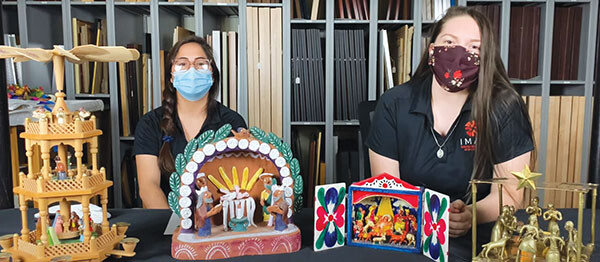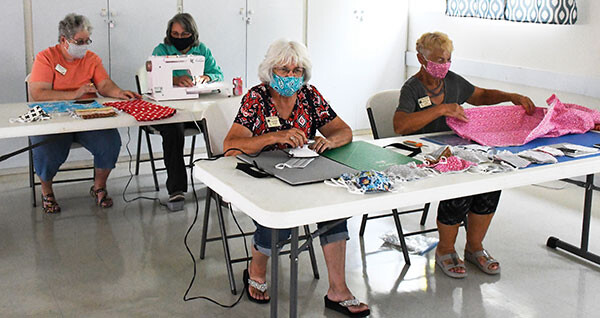- Details
-
Published: Tuesday, 05 January 2021 14:13
 By John Brush, Urban Ecologist at Quinta Mazatlán, McAllen
By John Brush, Urban Ecologist at Quinta Mazatlán, McAllen
The falcon, aglow with the evening’s golden light, banked sharply over the onion field. In response, the seemingly inactive rows suddenly propelled into motion as pipits burst into flight, alarm calls ringing out in warning. After just seconds of the birds whirling together, the falcon flew away empty-taloned, wheeling to the west, and the field returned to its visual dormancy. This time, however, I knew that the pipits were there in the bunches of onions, perhaps trying for one last insect snack before going to roost.
Read more: In celebration of birds
- Details
-
Published: Tuesday, 05 January 2021 14:09
 South Padre Island is hatching a very special sea turtle on the Sea Turtle Art Trail at Beach Resort South Padre Island. Painted by local muralist and artist Christina Salazar, “Liberty” is a stunning tribute to the dedication and service of first responders and frontline healthcare workers. A heartbeat is painted on her shell and the overall theme takes on the feeling of the flag in red, white, and blue elements throughout.
South Padre Island is hatching a very special sea turtle on the Sea Turtle Art Trail at Beach Resort South Padre Island. Painted by local muralist and artist Christina Salazar, “Liberty” is a stunning tribute to the dedication and service of first responders and frontline healthcare workers. A heartbeat is painted on her shell and the overall theme takes on the feeling of the flag in red, white, and blue elements throughout.
Read more: Liberty hatches on the Sea Turtle Art Trail
- Details
-
Published: Tuesday, 05 January 2021 14:07
Mission, being full of history, is also a hotspot for birding and butterfly enthusiasts. Mission also has a hiking and biking trail, a state park, and other sites to suit just about any interest. Having a little bit of everything in Mission, makes it a great place to visit any time of year.
Read more: Enjoy the outdoors in Mission
- Details
-
Published: Tuesday, 05 January 2021 14:05
 The U.S. Constitution and Color take center stage in the Texas Quilt Museum’s winter exhibits Deeds Not Words: Celebrating 100 Years of Women’s Suffrage and Red, White, & Blue. Both exhibits will run January 7-March 21, 2021.
The U.S. Constitution and Color take center stage in the Texas Quilt Museum’s winter exhibits Deeds Not Words: Celebrating 100 Years of Women’s Suffrage and Red, White, & Blue. Both exhibits will run January 7-March 21, 2021.
Read more: U.S. Constitution takes center stage in new exhibit
- Details
-
Published: Tuesday, 05 January 2021 14:01
 The International Museum of arts and Sciences (IMAS) is open and has several exhibits on display and programs taking place online. Currently online, IMAS has released their “Inside the Vault” series. In this new series by IMAS, the series will take a special look inside the vault of their permanent collections.
The International Museum of arts and Sciences (IMAS) is open and has several exhibits on display and programs taking place online. Currently online, IMAS has released their “Inside the Vault” series. In this new series by IMAS, the series will take a special look inside the vault of their permanent collections.
Read more: IMAS releases ‘Inside the Vault’ series
- Details
-
Published: Tuesday, 05 January 2021 13:50
 Edinburg, like many other Valley towns, was something quite small in the early 1900s, until Edinburg, then known as Chapin after the city’s founder, was selected as the new county seat in 1908. Official records, traveling by oxcart, made the journey from Hidalgo to Chapin to make the announcement.
Edinburg, like many other Valley towns, was something quite small in the early 1900s, until Edinburg, then known as Chapin after the city’s founder, was selected as the new county seat in 1908. Official records, traveling by oxcart, made the journey from Hidalgo to Chapin to make the announcement.
There is a little bit of history with Chapin and why the name was changed. Dennis Bangs Chapin was a former Hidalgo County Judge and land developer of the townsite. The town changed after Chapin shot a man named Oscar J. Rountree in a gunfight in a San Antonio saloon. Immediately following the gunfight, he was arrested and accused of murder—news that reached the citizens of Chapin. The city was renamed to Edinburg in 1911.
Read more: Edinburg: Historical reminders of the past
- Details
-
Published: Tuesday, 29 December 2020 15:07
Another year is closing, and a new one is beginning. This year has been so different and has given all of us a new perspective on what is important. It has taught me to be thankful for the little things, the little blessings, the little miracles. It has showed me how much a simple smile, text or phone call can have such a huge impact.
I am hoping the with a new year comes new possibilities, less anxiety, and that we can continue to find the small things that bring us, and others, joy.
Read more: December 29, 2020 - Rina's Ramblings
 By John Brush, Urban Ecologist at Quinta Mazatlán, McAllen
By John Brush, Urban Ecologist at Quinta Mazatlán, McAllen



 South Padre Island is hatching a very special sea turtle on the Sea Turtle Art Trail at Beach Resort South Padre Island. Painted by local muralist and artist Christina Salazar, “Liberty” is a stunning tribute to the dedication and service of first responders and frontline healthcare workers. A heartbeat is painted on her shell and the overall theme takes on the feeling of the flag in red, white, and blue elements throughout.
South Padre Island is hatching a very special sea turtle on the Sea Turtle Art Trail at Beach Resort South Padre Island. Painted by local muralist and artist Christina Salazar, “Liberty” is a stunning tribute to the dedication and service of first responders and frontline healthcare workers. A heartbeat is painted on her shell and the overall theme takes on the feeling of the flag in red, white, and blue elements throughout. The U.S. Constitution and Color take center stage in the Texas Quilt Museum’s winter exhibits Deeds Not Words: Celebrating 100 Years of Women’s Suffrage and Red, White, & Blue. Both exhibits will run January 7-March 21, 2021.
The U.S. Constitution and Color take center stage in the Texas Quilt Museum’s winter exhibits Deeds Not Words: Celebrating 100 Years of Women’s Suffrage and Red, White, & Blue. Both exhibits will run January 7-March 21, 2021. The International Museum of arts and Sciences (IMAS) is open and has several exhibits on display and programs taking place online. Currently online, IMAS has released their “Inside the Vault” series. In this new series by IMAS, the series will take a special look inside the vault of their permanent collections.
The International Museum of arts and Sciences (IMAS) is open and has several exhibits on display and programs taking place online. Currently online, IMAS has released their “Inside the Vault” series. In this new series by IMAS, the series will take a special look inside the vault of their permanent collections. By Carina A. Brunson
By Carina A. Brunson Edinburg, like many other Valley towns, was something quite small in the early 1900s, until Edinburg, then known as Chapin after the city’s founder, was selected as the new county seat in 1908. Official records, traveling by oxcart, made the journey from Hidalgo to Chapin to make the announcement.
Edinburg, like many other Valley towns, was something quite small in the early 1900s, until Edinburg, then known as Chapin after the city’s founder, was selected as the new county seat in 1908. Official records, traveling by oxcart, made the journey from Hidalgo to Chapin to make the announcement. The Senior Texan Slow Pitch Fun Softball League is preparing to play for the 2021 season. They are looking for players over 55 to add to their teams. There are two leagues to join. Playing begins on January 4 and 5.
The Senior Texan Slow Pitch Fun Softball League is preparing to play for the 2021 season. They are looking for players over 55 to add to their teams. There are two leagues to join. Playing begins on January 4 and 5.









